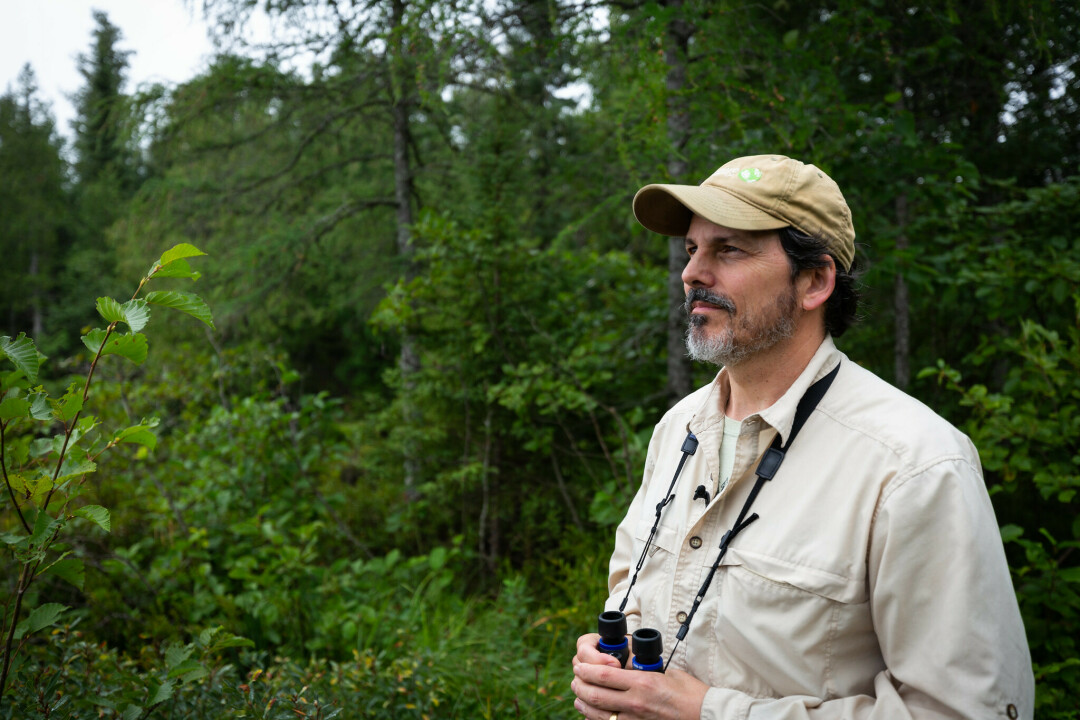News & Articles
Browse all content by date.
 Jim Manolis, Resilient Forests Program director for The Nature Conservancy in Minnesota.
Jim Manolis, Resilient Forests Program director for The Nature Conservancy in Minnesota.
Minnesota’s Northwoods are a crown jewel of the state and, from my view, the world. These woods are also deeply meaningful to me on a personal level. I now see that my life’s passions were born in the Northwoods through a series of lucky experiences.
It started at age five, fishing Lake Pokegama with my grandfather. He taught me how to wet a line and with him, I first felt awe for tall pines and the call of the loon. At age 11, I got to visit a bear den near Isabella. After holding a cub in my arms, I told my dad I wanted to be a naturalist when I grew up.
I didn’t really know what that meant, but it started a journey that led to environmental studies in college, stints leading canoe trips in the BWCA, interning at Wolf Ridge and graduate school studying forest birds near Leech Lake.
All led to an appreciation for the Northwoods, and a recognition that we humans have a deep responsibility to conserve and restore them for all the value they provide. Now, I sometimes have to pinch myself to recognize that I’m living out a dream career as director of The Nature Conservancy’s resilient forests program.
A local and global nonprofit, The Nature Conservancy (TNC) has long been in the business of protecting and restoring important natural areas including in Minnesota. From the Canadian border to the mouth of the St. Louis River, we work alongside partners to protect, restore and enhance the Northwoods so that present and future generations can enjoy them, just as I and many others have.
TNC has helped protect places like Carlton Peak, Tettegouche State Park, Hawk Ridge Nature Reserve, Susie Island, Clough Island and, more recently, private inholdings within the Superior National Forest. We’ve worked with partners for decades to restore habitat for important species including moose, lake sturgeon, migratory songbirds and more.
And in recent years, we’ve helped the Northwoods by planting millions of trees to restore the threatened canopy, including at places like Cascade River and Split Rock Lighthouse state parks. In all, our teams are averaging more than a million trees planted every year—with 1.4 million planted in 2022.
And as a science-driven organization, we’re planting for diversity and resilience by prioritizing tree species that will have the best chances to survive and thrive in the Northwoods’ future climate, ensuring our kids and grandkids will be able to visit these woods and see familiar friends like the towering white pines we’ve all come to know and love.
At TNC we work in 76 countries and all 50 states, leveraging global science to deliver local, on-the-ground results. But how we get it done is just as important as the work itself. In the Northland, we work creatively and collaboratively with partners including government agencies, Tribal Nations and local communities to advance conservation outcomes that work for people and nature. We recognize that solving planet-sized problems, like rapid climate change which threatens our cherished woods, requires many hands and many solutions.
No one of us can do this work alone. That’s why we’re proud to have supported efforts like returning Susie Island to its rightful caretakers, the Grand Portage Band of Lake Superior Chippewa, working with landowners to protect rare old growth forests, and working with climate-forward growers to source the seedlings we need for the future.
My team and I aim to work in harmony as part of and on behalf of this extraordinary landscape, planning (and planting!) in concert with our partners in a joint effort to restore and improve the Northwoods. I invite you to get to know your local TNC community by visiting nature.org/Minnesota, join as a member at nature.org/donate or speak up for state conservation policy at nature.org/SpeakUpMN.
Since 2014, Jim Manolis has served as Resilient Forests Program director for The Nature Conservancy in Minnesota, where TNC is focused on increasing the resilience of the Northwoods so that they can better sustain a diverse array of wildlife species, provide clean water, sequester carbon, and maintain a full suite of cultural, economic and scenic values. Prior to TNC, Jim worked in numerous forest-related roles at the Minnesota DNR for 19 years, including joint work for the Minnesota Forest Resources Council. He has Ph.D. and M.S. degrees in Conservation Biology from the University of Minnesota.
| Tweet |

